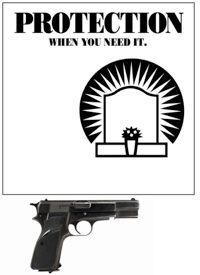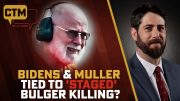
As the gun control lobby seeks to exploit the Tucson tragedy to deprive American citizens of their Second Amendment rights, Democrats are already pressuring President Obama to support such unconstitutional legislation. As Raven Clabough reported for The New American, Rep. Carolyn McCarthy (D-NY) has already introduce a bill in the House of Representatives which would go beyond the strictures of the old Brady Bill in limiting the capacity of the magazine of semiautomatic firearms.
That’s one way to restrict firearms. Another way is to price gun ownership outside the realm of possibility. Watch for proposals for insurance requirements for gun ownership which could place the cost of owning guns beyond the financial means of those who may need them the most for their self-defense: the poor.
Such proposals have already been made in the past. Consider the bill introduced in the Illinois legislature in 2009 by state representative Kenneth Dunkin (D–5th Dist.). InsuranceJournal.com reported at that time:
Rep. Kenneth Dunkin’s bill seeks to amend the state’s Firearm Owners Identification Card Act to provides that any person who owns a firearm in the state maintain a $1 million or higher policy of liability insurance “specifically covering any damages resulting from negligent or willful acts involving the use of such firearm while it is owned by such person.”
A gun owner would be responsible after a firearm is lost or stolen until the loss or theft is reported to the police department or sheriff of the jurisdiction in which the owner resides.
Police would be empowered to pull the gun license of anyone who does not submit evidence of having the required insurance.
Dunkin’s 2009 proposal offers an opportunity to weigh the impact of such legislation if it were proposed national. Consider what actually transpired in Illinois in that year. The FBI’s Uniform Crime Reporting (UCR) Program declares that in 2009, nationwide, the number of murders had a significant decline from the previous year: “An estimated 15,241 persons were murdered nationwide in 2009, which is a 7.3 percent decrease from the 2008 estimate, a 9.9 percent decrease from the 2005 figure, and a 2.2 percent decrease from the 2000 estimate.” According to Homicide Data Table 7 of the same report, 67.1% of those murders were committed with firearms (of any type), meaning that approximately 10,200 of reported murders in 2009 were committed with firearms; but it also means that 5,000 murders took place by other means. Thus, firearms may be a convenient means for people with evil intent to carry out their crime, but they are by no means the only means at their disposal.
Of these 15,241 murders, the same FBI statistics report 773 cases of murder or nonnegligent manslaughter in 2009 in the state of Illinois.
Now, consider a comparison between the murder rate with another cause of death in Illinois: traffic fatalities.
The Fatality Analysis Reporting System (FARS) of the National Highway Traffic Safety Administration reports that 33,808 people died in fatal crashes in the United States in 2009. Of these deaths, 911 occurred in Illinois. While many states had far more vehicular fatalities than occurred in Illinois, the number is still quite high. What level of insurance does the state of Illinois require of its drivers? According to the website of the Illinois Secretary of State:
You are in compliance with the mandatory insurance law if you have vehicle liability insurance in the following minimum amounts:
- $20,000 – injury or death of one person in an accident
- $40,000 – injury or death of more than one person in an accident
- $15,000 – damage to property of another person
Given that the insurance requirements for automobiles are practically infinitesimal compared to the proposed $1,000,000 insurance requirement for a firearm, it would seem only reasonable to expect that the actual danger and damage posed by firearms is at least 20 times greater than that posed by vehicles. That would be true, of course, only if the proposed gun insurance actually had anything to do with reality.
When the Illinois statistics are compared to the overall national statistics, one could make the tongue-in-cheek observation that it would seem that Illinoisans are safer drivers than the national average, but also more murderous. (That is, over five percent of the murders committed in the U.S. in 2009, as opposed to a little under three percent of the automobile fatalities.) Nevertheless, in the aggregate, it is still true that more people died in automobile accidents than by murder in Illinois.
Dunkin’s proposal was hardly an isolated idea, as was noted in an article at InsureMe.com:
Rep. Dunkin is not the first to float the idea of gun liability insurance. Legal experts and policymakers have considered the idea as a way to compensate innocent victims of gun-related accidents and violence, many of whom are killed or injured by stolen guns. In such cases where the gun was stolen, the original owner is typically not liable unless the weapon was stolen through negligence on the part of the owner.
Writing for NorthJersey.com, Rutgers University law professor Bernard W. Bell proposed applying the legal concept of ‘liability without fault’ to owners of firearms.
“For some dangerous instruments, society imposes liability without fault — that is, the person who keeps or uses the item is liable for injuries to others even if he or she is as careful as can be,” says Bell. “For example, those who own and use explosives in this country are generally liable for all the injuries they cause, regardless of their level of care. Such an approach recognizes that, while the activity may be lawful and to some extent necessary, those who engage in the activity should pay for the carnage the activity almost inevitably produces.”
In such a context, a gun owner would be liable even if a thief stole her gun and shot someone.
Furthermore, the rate of accidental deaths from firearms has dropped dramatically, without such insurance requirements. According to the National Rifle Association,
The firearm accident death rate is at an all-time annual low, 0.2 per 100,000 population, down 94% since the all-time high in 1904. Since 1930, the annual number of such deaths has decreased 80%, to an all-time low, while the U.S. population has more than doubled and the number of firearms has quintupled. Among children, such deaths have decreased 90% since 1975. Today, the odds are more than a million to one, against a child in the U.S. dying in a firearm accident.
Firearms are involved in 0.5% of accidental deaths nationally, compared to motor vehicles (37%), poisoning (22%), falls (17%), suffocation (5%), drowning (2.9%), fires (2.5%), medical mistakes (1.7%), environmental factors (1.3%), and pedal cycles (0.7%). Among children: motor vehicles (41%), suffocation (21%), drowning (15%), fires (8%), pedal cycles (2%), poisoning (2%), falls (1.9%), environmental factors (1.5%), firearms (1.1%) and medical mistakes (1%).
The NRA statistics are only further confirmation of what has already been demonstrated: Vehicles are vastly more dangerous than firearms. When vehicular deaths are compared with homicides, it is apparent that far more Americans are killed on the road than are murdered. And yet, the insurance requirements for deadly vehicles is dramatically less than would be proposed by gun insurance advocates.
The result of such insurance would be intimidation of gun owners, with little measurable benefit to reducing the rate of accidental death and injury.
There is a further consideration which must be taken into account: the right of self-defense (which includes the right to keep and bear arms) is a constitutionally-enumerated right. No such right exists concerning driving or owning an automobile.
The horrific event in Tucson would not have been averted by gun insurance; but insurance companies may very well have grown even more wealthy off the cost of such insurance. Once again, gun control via insurance may be very lucrative for companies and place more power in the hands of government to restrict the actions of law-abiding citizens, but it will do nothing to stop the actions of the criminal, or the insane.



